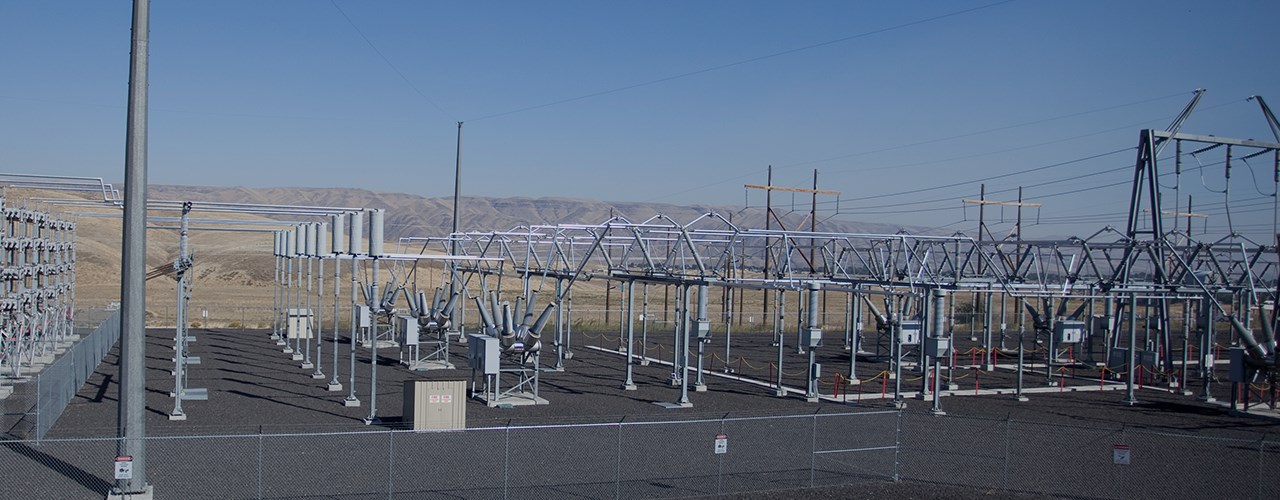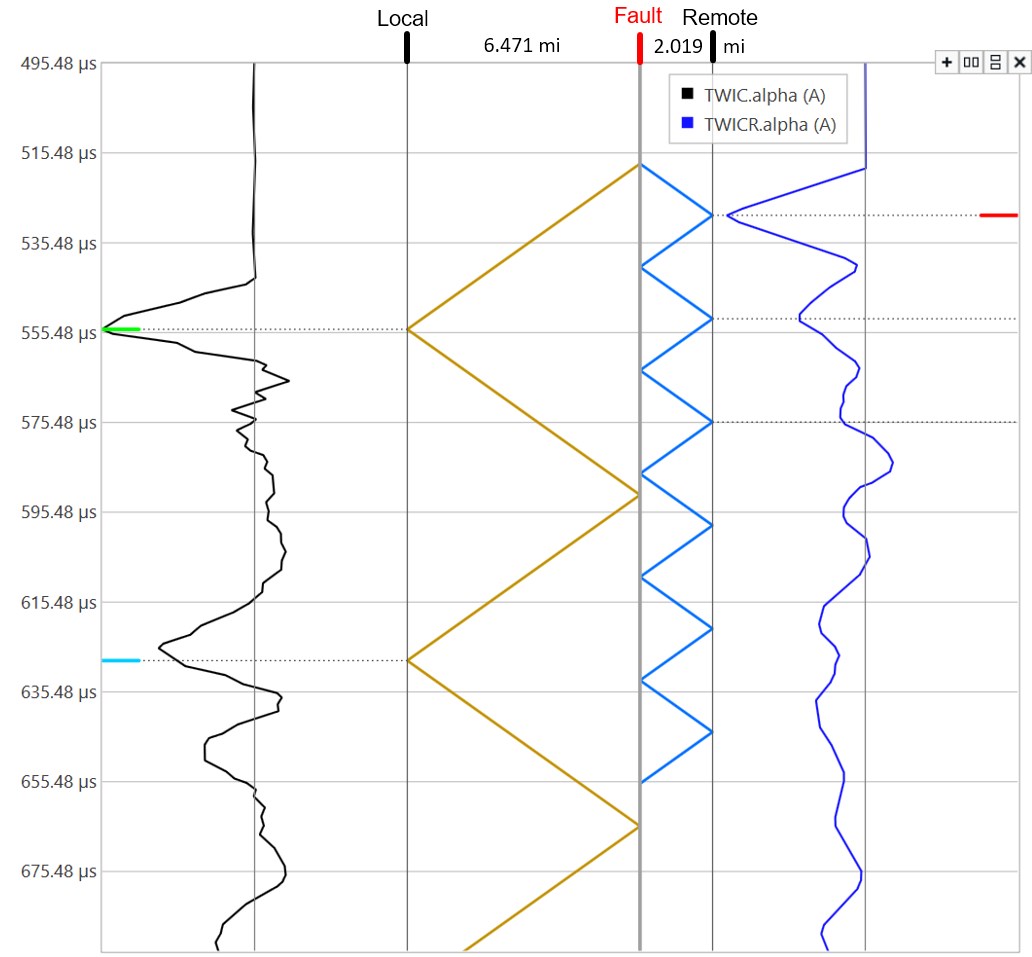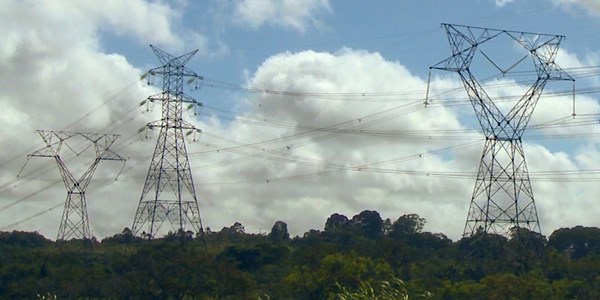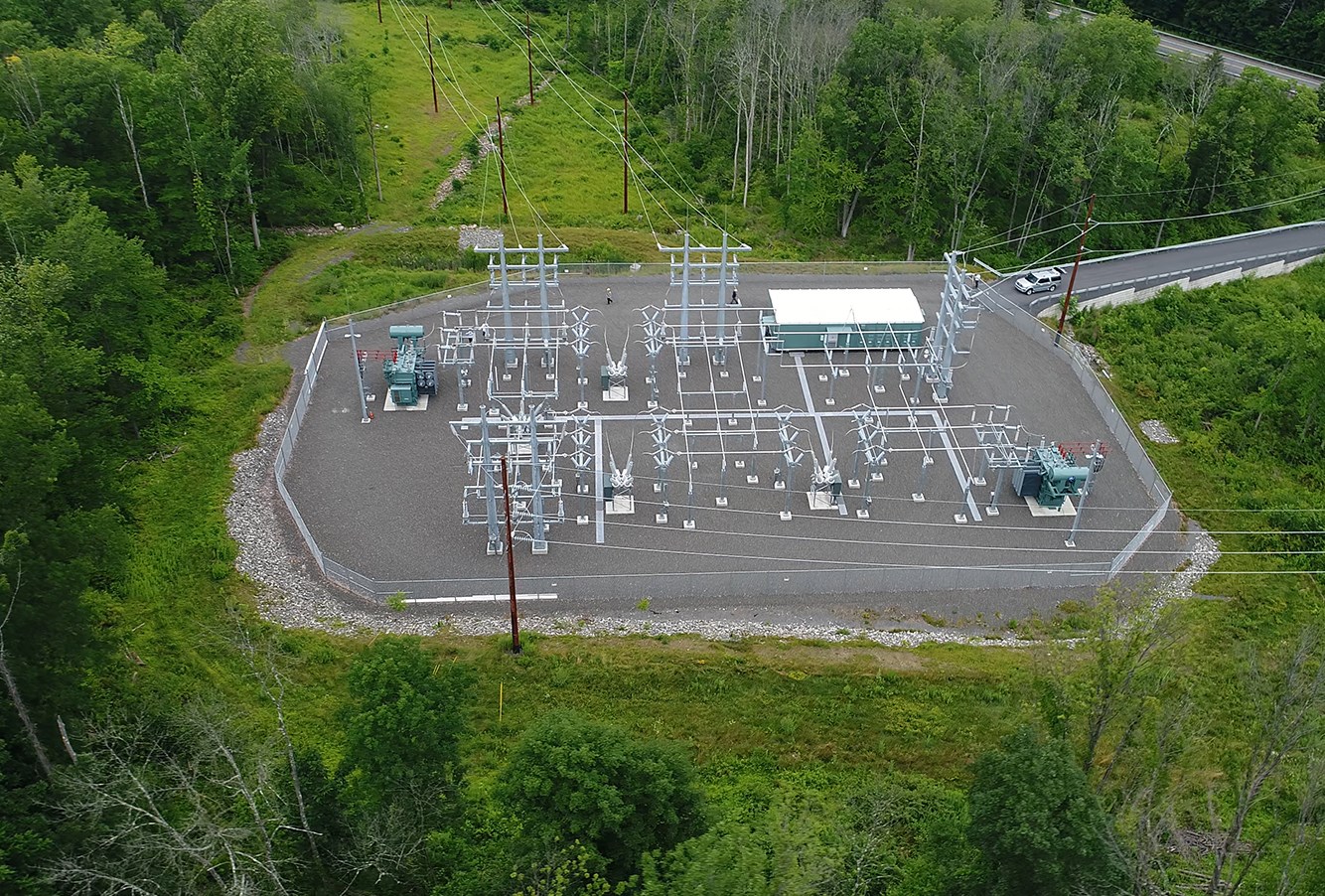
SEL-411L
Advanced Line Differential Protection, Automation, and Control System
Apply the SEL-411L for complete protection and control of any transmission line (short, long, or series-compensated). The SEL-411L provides differential and distance protection with both phase- and sequence-based operating elements for sensitivity and high-speed operation.
You can choose from many popular fiber and multiplexed communications options. The SEL-411L has distance protection and automation logic for resilient line protection and includes a traveling-wave fault-locating method to locate faults within a tower span. Broken conductor detection in the SEL-411L detects conductor breaks in overhead lines. This function can prevent a shunt fault that could occur from a falling conductor.
Transform the way you modernize your substation with optional Time-Domain Link (TiDL) technology or Sampled Values (SV)-based technology using IEC 61850-9-2.
Starting At
$11,500Line Current Differential Protection—Apply subcycle single- or three-pole line current differential protection with backup distance protection for transmission lines using serial or Ethernet for differential communications. Patented generalized Alpha Plane technology combined with overcurrent supervision, external fault detection, and disturbance detection logic enables the 87L function to operate with exceptional security and sensitivity. You can invert individual or grouped CT or PT polarities to account for field wiring or protection zone changes.
Series-Compensated and Long Lines—Prevent Zone 1 overreach on series-compensated lines with optional logic in the SEL-411L-1. Built-in charging compensation improves the sensitivity and speed of differential protection for long lines.
In-Line Transformers—Simplify protection schemes and reduce equipment costs by providing complete protection for the combined line and transformer. The 87L function of the relay allows in-line transformer applications that compensate for vector group, ratio, and zero sequence of the in-zone transformer. Use harmonic blocking, restraint, or both for stabilization under magnetizing inrush conditions.
Out-of-Step Blocking and Tripping—During power swings, the relay automatically selects either out-of-step blocking or out-of-step tripping. Out-of-step blocking enhances your security by blocking distance elements during stable swing conditions. During unstable power swing conditions, the SEL-411L implements out-of-step tripping to maintain balance between generation and load.
Multiterminal Transmission Lines—Protect lines with up to four terminals. Apply the SEL-411L on breaker-and-a-half bus configurations or other two-breaker schemes with the relay’s dual CT and PT inputs. Efficiently dispatch line crews to quickly isolate line problems and restore service faster. The multiterminal fault location system quickly locates faults, even on lateral transmission lines.
Flexible Communications Options—Use small form-factor pluggable (SFP) transceivers on designated process bus, station bus, and engineering access ports in the five-port Ethernet card. Choose between single- and multimode communications options for increased flexibility. All ports support 100 Mbps SFP transceivers, and process bus ports also support 1 Gbps SFP transceivers.
Traveling-Wave Fault Locator—Accurately pinpoint faults with time-synchronized traveling-wave fault location. Save time and money by sending maintenance crews to the tower nearest the fault.
Broken Conductor Detection—Detect conductor breaks in subtransmission or transmission overhead lines using the broken conductor detection function. This function can prevent a shunt fault that could occur from a fallen conductor. Configure the broken conductor detection function to block autoreclose attempts onto permanent faults. The function also provides the location of the conductor break to aid in restoring the power line.
Bay Control, Reclosing, and Breaker Failure Detection—Apply complete bay control, reclosing, and breaker failure protection for two breakers. Monitor circuit breaker performance, including the average and last tripping time, motor run time, and contact-interrupting duty.
Reliable Distance Protection—Provide reliable backup protection with five zones of phase and ground distance elements that include directional overcurrent elements for subcycle operation and security.
Thermal Overload Protection—Use the three independent IEC 60255-149 thermal elements to activate a control action, issue an alarm, or trip when equipment overheats as a result of adverse operating conditions. The SEL-2600 RTD Module provides ambient temperature measurements.
Digital Secondary System Technologies—SEL TiDL and SV-based solutions replace copper with fiber to increase safety, improve reliability, and limit the impact of an electromagnetic pulse. Apply the SEL-411L-2 TiDL relay with the SEL-TMU TiDL Merging Unit in the field to provide remote I/O and digitize analog signals. This simple point-to-point solution with a strong cybersecurity posture is easy to implement. Apply the IEC 61850-compliant SEL-411L-2 SV relay to receive SV data from a remote merging unit via a network. Improve system availability in SV applications with the Parallel Redundancy Protocol (PRP) or seamless failover using a five-port Ethernet card.
Features
-
- 1
EIA-232 front serial port is quick and convenient for system setup and local access.
- 2
Front-panel display allows operators to control and view the status of disconnects and breakers.
- 3
User-selectable mimic screens show the system configuration in one-line diagram format.
- 4
Easy-to-use keypad aids simple navigation.
- 5
24 programmable target LEDs with user-configurable labels alert operators in the substation to faulted phases, the relay’s status, and element operation.
- 6
Programmable operator pushbuttons with user-configurable labels allow front-panel customization.
123456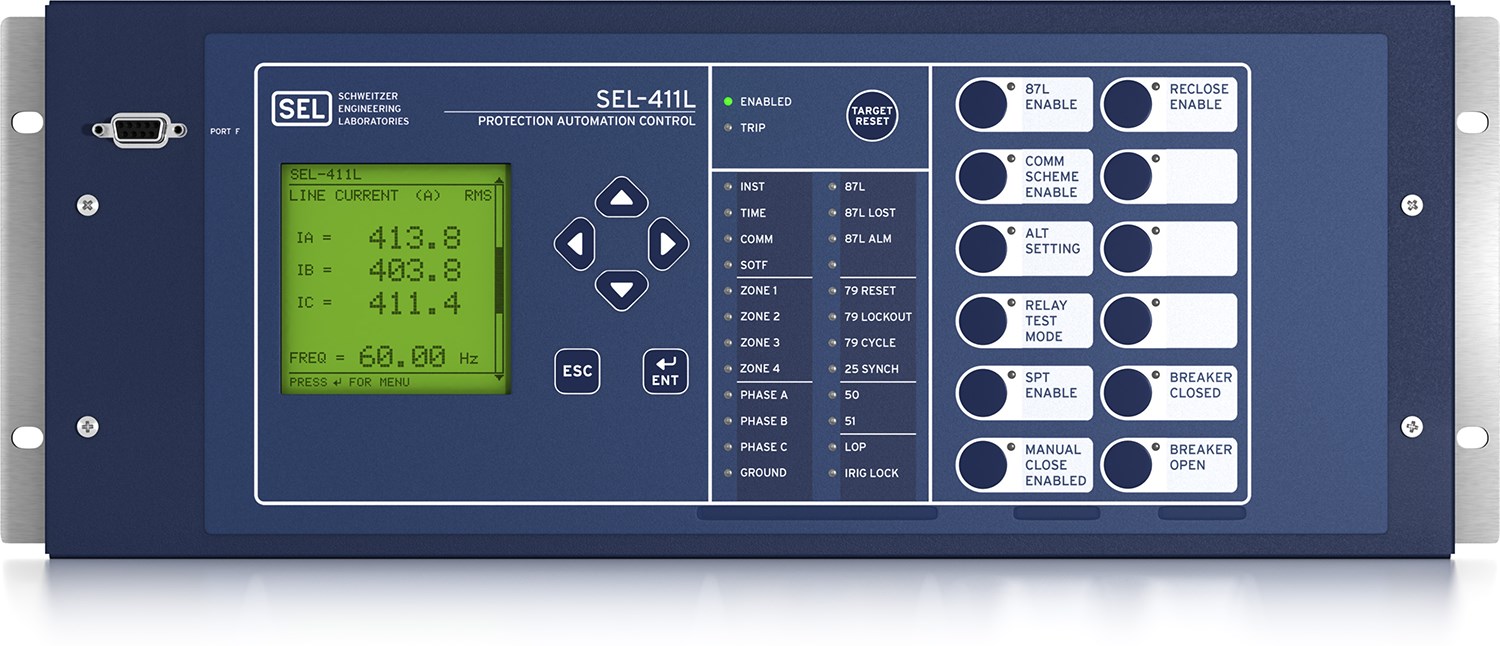
-
-
- 1
Choose from a vertical or horizontal, panel-mount or rack-mount chassis and different size options.
- 2
Choose either fiber or copper connections for one or two 87L communications channels.
- 3
Communications protocols include FTP, Telnet, synchrophasors, DNP3 LAN/WAN, IEC 62439-3 PRP, the IEEE 1588 Precision Time Protocol Version 2 (PTPv2), and IEC 61850 Edition 2.1 (optional feature).
- 4
Three EIA-232 serial ports for Mirrored Bits communications, SCADA, and engineering access provide flexibility to communicate with other devices and control systems. The ports include demodulated IRIG-B for precise-time input.
- 5
Six current and six voltage analog inputs support protection for substations with dual-breaker schemes.
- 6
The power supply allows different options: 24–48 Vdc; 48–125 Vdc or 110–120 Vac; or 125–250 Vdc or 120–240 Vac.
123456.jpg?n=63881470453000)
-
-
- 1
4U chassis with mounting options (vertical or horizontal; panel or rack) accommodates your application needs.
- 2
LEDs indicate the connection status to an SEL-TMU on a per-port basis.
- 3
Eight SFP ports allow the TiDL relay to connect with eight remote SEL-TMU devices and to receive remote analog and digital data.
- 4
Choose either fiber or copper connections for one or two 87L communications channels.
- 5
Select a five-port Ethernet communications card for dedicated station bus and engineering access ports.
12345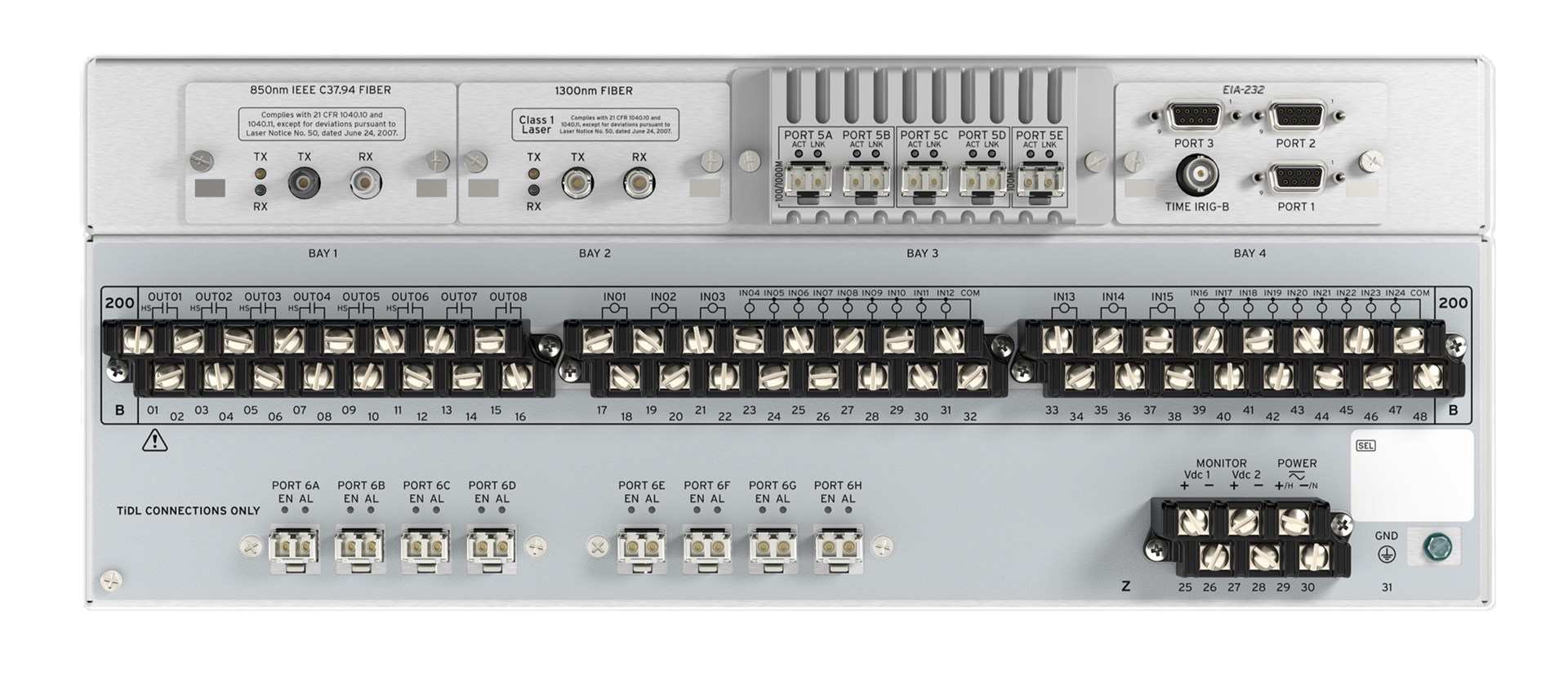
-
-
- 1
The 4U chassis has various mounting options to accommodate hardware needs.
- 2
Choose either fiber or copper connections for one or two 87L communications channels.
- 3
Select a five-port Ethernet communications card for dedicated process bus, station bus, and engineering access ports.
123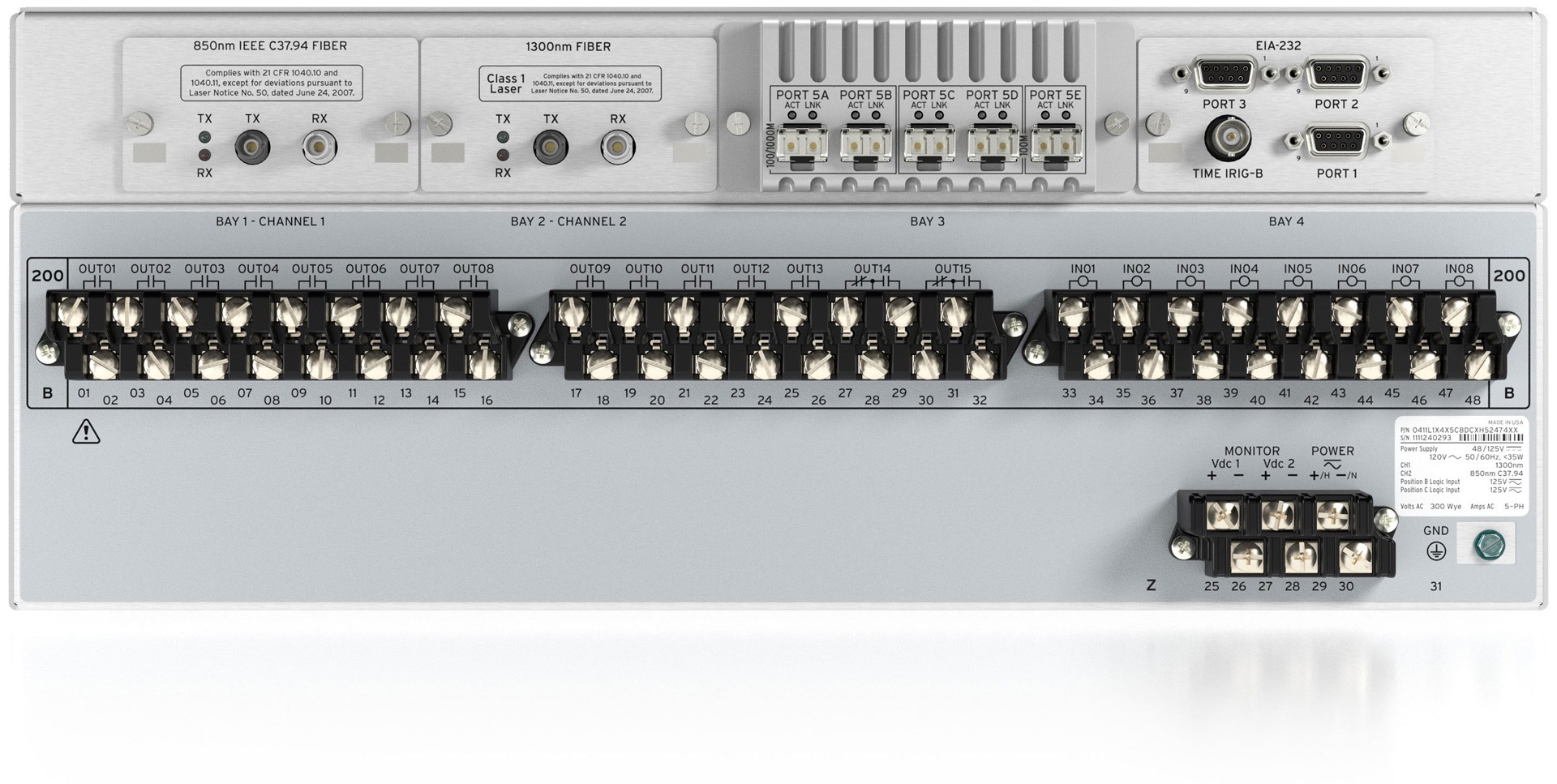
-
Details
High-Speed Differential Protection
Differential elements improve system stability with subcycle operating times . Line charging current compensation provides an accurate response for long or short lines. Apply the proven Alpha Plane operating principle for reliable and secure operation. Serial or Ethernet channels can be used for differential protection.
Multiterminal Protection With Fault Location
Line current differential protection provides high-speed protection for multiterminal lines, even with two breakers per terminal. Protect up to three terminals using serial communications or up to four terminals using Ethernet. In addition, the multi-ended impedance-based fault locating algorithm uses information from all terminals to accurately locate faults.
Distance Protection
Complete subcycle distance and directional elements provide standalone protection or backup protection to differential schemes in the event that communications are lost. Best Choice Ground Directional Element logic optimizes directional element performance and eliminates the need for many directional settings. Apply the distance and directional elements in communications-based protection schemes like POTT, DCB, and DCUB, or for instantaneous or time-step backup protection.
Complete Reclosing System With Synchronism Check and High-Speed Breaker Failure Detection for Two Breakers
Dual CT and PT input logic and settings are included for control of two circuit breakers. Settable voltage inputs provide flexible operation. Open-pole detection in less than 5/8 of a cycle allows the use of shorter breaker failure margin times. Independent current inputs provide protection for two circuit breakers.
Fault Locating
Accurately pinpoint faults using the double-ended traveling-wave fault locating method. Save time and money by sending maintenance crews to the tower closest to the fault. At the same time, ensure dependability with single- and multi-ended impedance-based fault-locating methods.
Broken Conductor Detection
The Broken Conductor Detection (BCD) element is designed to detect a conductor break before it converts into a shunt fault for overhead lines. The BCD element can help in mitigating possible fire or public hazard. The detection logic compares the measured current against the line charging current threshold and uses the angular difference between the phase voltage and phase current to detect the conductor break. Additionally, the BCD function includes fault locating and phase identification to assist the user in restoring service.
Synchrophasor Measurements to Increase Asset Utilization
Use IEEE C37.118.1/2-2011, -2014a Standard for Synchrophasor Measurements for Power Systems with 1–60 messages per second to analyze power system events and to validate system load flow and fault models. Apply direct relay-to-relay synchrophasors for wide-area-based control without additional devices.
True Digital Fault Recorder (DFR) Functionality
Use records sampled at 8 kHz in IEEE C37.111-2013 COMTRADE format to analyze power system events directly from the relay without the need for dedicated equipment.
SEL TiDL-Based Solutions
Apply a TiDL-based process bus solution, where SEL-TMU devices are placed in the yard close to the primary equipment to digitize discrete I/O signals and analog data. SEL-TMU units exchange these data with an SEL-411L-2 TiDL relay in the control house. Each SEL-TMU can share data with as many as four TiDL relays, providing protection design flexibility.
TiDL combines the proven protection of the SEL-400 series relays with the purpose-built SEL-TMU, simplifying deployment, reducing training requirements, and increasing availability. TiDL technology uses point-to-point connections and a non-Ethernet protocol, providing a simple and secure solution. TiDL also provides built-in data synchronization and synchronous sampling, ensuring protection is available in the relay regardless of whether an external time signal is available.
SEL SV-Based Solutions
Based on the IEC 61850 standard, SV-based solutions maximize flexibility and interoperability. The SEL-401 Protection, Automation, and Control Merging Unit and the SEL-421-7 Protection, Automation, and Control System Merging Unit digitize analog signals from primary equipment and send them using the Sampled Values protocol to an SEL-411L-2 SV relay in the control house. Because all SEL SV devices are compliant with IEC 61850-9-2 and the UCA 61850-9-2LE guideline, the SEL-411L-2 SV relay can be used with other manufacturers’ IEC 61850-compliant units.
Flexible Ethernet Communications
The four- and five-port Ethernet communications card options enable you to communicate using a variety of protocols, including FTP, HTTP, DNP3, PTPv2, PRP, Telnet, synchrophasors, and IEC 61850 Edition 2.1.
The SEL-411L can be configured with a five-port Ethernet card supporting PRP or failover functionality to increase system availability, as well as the Precision Time Protocol Version 2 (PTPv2) on process bus or station bus ports for time synchronization. Use network monitoring features in the relay to further improve system availability by actively monitoring each redundant path to detect communications network failures.
The five-port card also features dedicated ports and IP addresses for station bus and engineering access networks to provide selective access control. All ports support small form-factor pluggable (SFP) transceivers. Single- and multimode communications options provide increased flexibility. All ports support 100 Mbps SFP transceivers, and process bus ports also support 1 Gbps SFP transceivers.
Serial Communications
All four independent EIA-232 serial ports support SEL Fast Message, ASCII, Compressed ASCII, Extended Fast Meter, Fast Operate, Fast SER, SEL Mirrored Bits communications, Ymodem, and DNP3 Level 2 Outstation as well as dial-out, Virtual Terminal, and communications with SEL-2600 series RTD modules.
Simplified Settings Management
Use acSELerator QuickSet SEL-5030 Software to develop relay settings offline and program SELogic control equations. Configure the TiDL and SV relays using SEL Grid Configurator software, which increases efficiency and improves settings insights. It features a spreadsheet-style editor, protection visualization, comprehensive reporting, custom filters, and multiple-device settings management.

- Current differential and distance (mho and quadrilateral) protection
- Multiterminal transmission line protection

- Current differential and high-speed distance (mho and quadrilateral) protection
- Multiterminal and series-compensated line applications
- Traveling-wave fault location for pinpointing faults within a tower span
- High-speed, high-current interrupting outputs for high-speed tripping

- Current differential and high-speed distance (mho and quadrilateral) protection
- Multiterminal and series-compensated line applications
- Traveling-wave fault location for pinpointing faults within a tower span
Minimum Software Version
Latest Firmware Versions
There are no firmware versions available for this product.
| Product | Revision | Firmware ID | Date Available | Serial Number |
|---|---|---|---|---|
| SEL-411L-0 | R133-V0 | SEL-411L-R133-V0-Z022004-D20250515 | 5/29/25 | ~1251490001 |
| SEL-411L-1 | R133-V0 | SEL-411L-1-R133-V0-Z022004-D20250515 | 5/29/25 | ~1251490001 |
| SEL-411L-2 | R205-V0 | SEL-411L-2-R205-V0-Z105100-D20250515 | 5/29/25 | ~1251490001 |
| SEL-411L-A | R133-V0 | SEL-411L-A-R133-V0-Z022004-D20250515 | 5/29/25 | ~1251490001 |
| SEL-411L-B | R133-V0 | SEL-411L-B-R133-V0-Z022004-D20250515 | 5/29/25 | ~1251490001 |
The Firmware IDs for older versions of the firmware can typically be found in Appendix A of the instruction manual.
Minimum Software Version
Instruction Manuals
Sales Resource Central access is required to view the content in this tab.
Sales Resource Central411L 421 451 487B 487E - Software Tab
Configuration Software
acSELerator QuickSet SEL-5030 Software
QuickSet is a tool for engineers and technicians to quickly and easily configure, commission, and manage power system devices. QuickSet includes a Graphical Logic Editor and a device template tool to reduce configuration time and streamline deployment.
Learn more and download on the QuickSet software page.
SEL-5037 Grid Configurator Software
SEL Grid Configurator is a no-charge software tool for engineers and technicians to create, manage, and deploy settings for SEL power system devices.
Learn more and download on the Grid Configurator software page.
acSELerator Architect SEL-5032 Software
Architect allows users to configure and document IEC 61850 systems that include GOOSE, Sampled Values (SV), or Manufacturing Message Specification (MMS) communications. Architect automatically compares SCL files with IEC 61850 requirements to ensure standard compliance.
Learn more and download on the Architect software page.
Automated Data Collection
SEL Data Management and Automation (DMA) Application Suite
Available on the Blueframe platform, DMA applications automatically collect, store, and manage device-specific information like oscillography, Sequence of Events (SOE) data, device settings, and property information. They also provide automated password rotation and streamlined device audits.
Learn more on the DMA software page.
Visualization and Analysis
SEL-5601-2 Synchrowave Event Software
Synchrowave Event helps engineers diagnose a protective relay’s behavior during a power system fault. It is a powerful and easy-to-use solution for displaying and analyzing SEL relay event reports and COMTRADE files.
Learn more and download on the Synchrowave Event software page.



